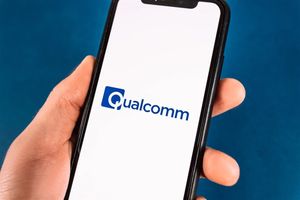Preliminary clinical data for first-generation CLN7 construct support favorable tolerability and safety profile with no major adverse events across doses delivered
Data Safety Monitoring Board (DSMB) supported dose escalation from 5.0x1014 (n=1) to 1.0x1015(n=2), which is the highest dose delivered intrathecally in humans to date
Preliminary clinical efficacy and safety data to be presented at the 18th Annual WORLDSymposium in February 2022 by Dr. Ben Greenberg, Vice Chair of Clinical and Translational Research and Professor in the departments of Neurology and Pediatrics at UT Southwestern
Design of next-generation construct to improve potency, packaging efficiency and manufacturability as well as reduce risk of immunogenicity over first-generation construct completed
Taysha Gene Therapies, Inc. (Nasdaq: TSHA), a patient-centric, pivotal-stage gene therapy company focused on developing and commercializing AAV-based gene therapies for the treatment of monogenic diseases of the central nervous system (CNS) in both rare and large patient populations, today announced preliminary clinical safety data for the first-generation construct in CLN7 disease. Preliminary clinical efficacy and safety data will be presented at the 18th Annual WORLDSymposium in February 2022 by Dr. Ben Greenberg, Vice Chair of Clinical and Translational Research and Professor in the departments of Neurology ad Pediatrics at UT Southwestern (UTSW). In addition, UTSW has completed the design of a next-generation construct, which is expected to further improve potency, packaging efficiency and manufacturability as well as reduce risk of immunogenicity over the first-generation construct.
“We are very pleased that the first-generation construct has been well tolerated and preliminary data from the ongoing clinical trial support a favorable safety profile. To date, three patients with CLN7 disease have been treated, including two patients dosed at 1.0x1015 total vg, which is the highest dose ever safely administered intrathecally in humans for a gene therapy. The DSMB supported dose escalation from the 5.0x1014 initial dose to the 1.0x1015 high dose. Importantly, there have been no major adverse events observed. We look forward to Dr. Ben Greenberg’s presentation of the preliminary clinical efficacy and safety data at the upcoming 18th Annual WORLDSymposium in February,” said Suyash Prasad, MBBS, M.Sc., MRCP, MRCPCH, FFPM, Chief Medical Officer and Head of Research and Development of Taysha. “Additionally, UTSW has finalized the design of a next-generation CLN7 construct, which is expected to improve potency, packaging efficiency and manufacturability as well as reduce risk of immunogenicity over the first-generation construct. With human proof-of-concept clinical data to reference, we remain on track to advance the next-generation construct into a planned pivotal trial in 2022.”
UTSW continues to enroll patients in the investigator-sponsored clinical trial at Children’s Medical Center Dallas for the intrathecally dosed first-generation AAV9-based gene replacement therapy for the treatment of infantile CLN7 disease. The primary endpoint of the trial is safety and tolerability. Secondary efficacy endpoints include the Clinical Global Impression scales, assessments of neuropsychological and neurodevelopmental progression, ataxia and motor function, and quality of life. UTSW maintains financial interest in Taysha.
CLN7 disease is a rare, fatal and rapidly progressive neurodegenerative disease that is a form of Batten disease. CLN7 is caused by autosomal recessive mutations in the MFSD8 gene that result in lysosomal dysfunction and accumulation of abnormal material in the lysosomes of the cells. Disease onset occurs around two to five years of age, with death often ensuing in young adolescence. Patients experience gradual nerve cell loss in certain parts of the brain and typically present with seizures, vision loss, speech impairment and mental and motor regression. Currently, there are no approved therapies to treat CLN7 disease, which impacts an estimated 4,000 patients globally.
About Taysha Gene Therapies
Taysha Gene Therapies (Nasdaq: TSHA) is on a mission to eradicate monogenic CNS disease. With a singular focus on developing curative medicines, we aim to rapidly translate our treatments from bench to bedside. We have combined our team’s proven experience in gene therapy drug development and commercialization with the world-class UT Southwestern Gene Therapy Program to build an extensive, AAV gene therapy pipeline focused on both rare and large-market indications. Together, we leverage our fully integrated platform—an engine for potential new cures—with a goal of dramatically improving patients’ lives. More information is available at www.tayshagtx.com.
Forward-Looking Statements
This press release contains forward-looking statements within the meaning of the Private Securities Litigation Reform Act of 1995. Words such as “anticipates,” “believes,” “expects,” “intends,” “projects,” and “future” or similar expressions are intended to identify forward-looking statements. Forward-looking statements include statements concerning the potential of our product candidates, including the CLN7 program, to positively impact quality of life and alter the course of disease in the patients we seek to treat, our research, development and regulatory plans for our product candidates, the potential for these product candidates to receive regulatory approval from the FDA or equivalent foreign regulatory agencies, and whether, if approved, these product candidates will be successfully distributed and marketed, and the potential market opportunity for these product candidates. Forward-looking statements are based on management’s current expectations and are subject to various risks and uncertainties that could cause actual results to differ materially and adversely from those expressed or implied by such forward-looking statements. Accordingly, these forward-looking statements do not constitute guarantees of future performance, and you are cautioned not to place undue reliance on these forward-looking statements. Risks regarding our business are described in detail in our Securities and Exchange Commission (“SEC”) filings, including in our Annual Report on Form 10-K for the full-year ended December 31, 2020, and our Quarterly Report on Form 10-Q for the quarter ended September 30, 2021, both of which are available on the SEC’s website at www.sec.gov. Additional information will be made available in other filings that we make from time to time with the SEC. Such risks may be amplified by the impacts of the COVID-19 pandemic. These forward-looking statements speak only as of the date hereof, and we disclaim any obligation to update these statements except as may be required by law.
View source version on businesswire.com: https://www.businesswire.com/news/home/20211222005114/en/
Contacts
Company Contact:
Kimberly Lee, D.O.
SVP, Corporate Communications and Investor Relations
Taysha Gene Therapies
klee@tayshagtx.com
Media Contact:
Carolyn Hawley
Canale Communications
carolyn.hawley@canalecomm.com





